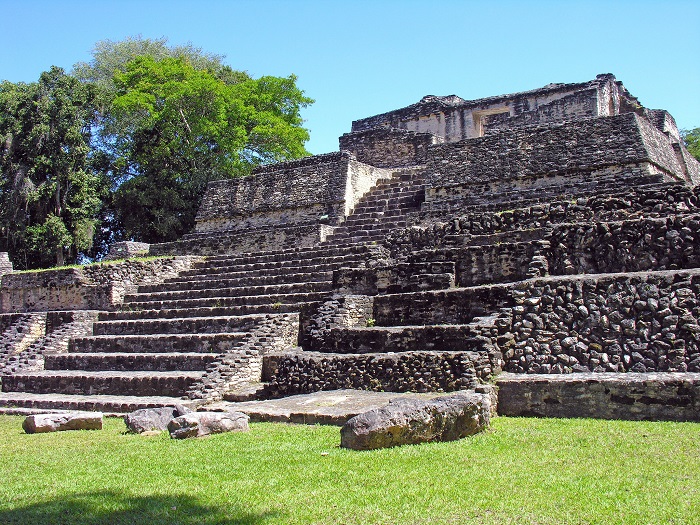Caracol is an ancient archaeological site that once was part of the Maya civilization, and it is located in the western part of the Cayo District, within the western part of Belize. As the large archaeological site rests on the Vaca Plateau at an elevation of some 500 m (1,600 ft) above sea level, it is located in the Maya Mountains mountain range, covering an area of some 200 sq km (77 sq mi) which is larger than the current-day largest metropolitan area of Belize City.

The name Caracol is derived from the Spanish language, which stands for snail or shell, but generally, it means spiral or volute-shaped from the winding access road that leads to it, and its original Mayan name is considered to be Oxhuitza, or in translation Place of Three Hills.

When it was discovered, it was thought that Caracol was just a tertiary center, however, with the advancement of archaeological science, nowadays it is known that Caracol was one of the most important regional political centers of the Maya Lowlands during the Classic Period.
The city was strategically situated on the trade routes between the Maya Southern Lowlands and the Caribbean and connected with 60 km (37 mi) of sabeob, white stone roads, that have been discovered today. Due to its location in a tropical rain forest, it provided somewhat natural protection, however, with the large number of structures going above the forest, it allowed for the tips of some buildings to be visible from far away.
In its heydays, Caracol was the home to around 150,000 inhabitants, and its central core consists of three plaza groups which are surrounding a central acropolis and two ball courts, accompanied by a significant number of smaller structures.
As the site is thought to be founded around 1200 BC, it stood hidden in the rainforest until 1937 when the native logger Rosa Mai discovered it while searching for mahogany hardwood. After the report to the archaeological commission of then British Honduras, later in 1938 the archaeological commissioner Anderson and his colleague Jex visited the site and officially named it Caracol.
During this time they conducted some small surveys and excavations and discovered 9 carved monuments, which later allowed them to conduct wider excavations and discovered 40 stone monuments. Based on the estimations, it is considered that there are 267 structures throughout the entire complex, and the largest temple of the buildings is Caana, better known as the Sky Palace.

This massive and quite impressive pyramidal complex is located on the northern side of the plaza and as it rises from a massive base towards the sky, it is measured to be 44 m (140 ft) high. As it is the tallest structure in Caracol, at the top of the truncated pyramid is a courtyard that houses three temples which are set in a standard triadic fashion.
There is a central stairway that rises to the summit’s terrace, and a two-chamber structure can be found on the terrace exhibiting three entryways. They were coated with white stucco and decorated with red paint, giving it bigger importance, as it was the central and most important structure of the entire city.
Other important buildings and items discovered in Caracol include 24 religious altars, three large ball courts, five big plazas, 24 carved stelae, reservoirs, causeways, and a very advanced astronomical observatory.
Today Caracol can be found within the Chiquibul Forest Reserve and is surrounded by both primary and secondary tropical rainforest which allows visitors to get a glimpse of the former power center that the Mesoamerican civilization used for constructing the geopolitics of that time, and carve Central America based on Caracol’s power and desires.
In conclusion, Caracol was a powerful ancient Maya city that played a significant role in the region’s political, economic, and cultural landscape and with its impressive architectural feats and complex social systems, Caracol serves as a testament to the ingenuity and resilience of the Maya civilization.
Despite facing challenges such as war and environmental changes, Caracol managed to thrive for several centuries and leave a lasting legacy that continues to inspire modern-day researchers and enthusiasts, by providing valuable insights into the ancient Maya way of life and serving as an important piece in the puzzle of understanding this remarkable civilization.












